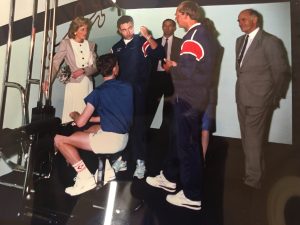
How I first learned about cardiac conditions in young people – By CRY Founder Alison Cox MBE
This is the first part of CRY’s “Looking Back at 25” series. As we mark our 25th year anniversary, these articles will remember key parts of CRY’s history, and look at how the charity has developed and got to where it is today. ….. After one year at a tennis orientated Texas High School and a
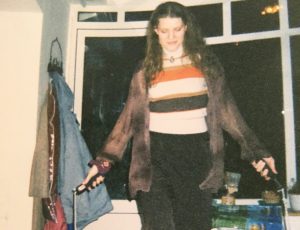
Looking Back at 25: CRY’s first fundraiser
This is the second part of CRY’s “Looking Back at 25” series. As we mark our 25th year anniversary, these articles will remember key parts of CRY’s history, and tell the story of how the charity has developed and got to where it is today. ….. Those familiar with CRY’s history will be familiar with the

Looking Back at 25: When young sudden cardiac death started receiving more press coverage
This is the third part of CRY’s “Looking Back at 25” series. As we mark our 25th year anniversary, these articles will remember key parts of CRY’s history, and tell the story of how the charity has developed and got to where it is today. ….. Back when CRY was founded as a charity in 1995

Looking Back at 25: The volunteers who helped get CRY started
As CRY began taking its early steps as an official charity (for the formative years, in a temporary office in the spare bedroom at Alison Cox’s home in Surrey) it soon became clear that Alison couldn’t do it all by herself. The vision was big and interest in the charity was also starting to get bigger…
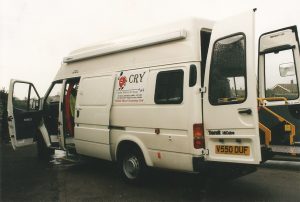
Looking Back at 25: The beginning of CRY’s screening programme
CRY Founder Alison Cox MBE first had the idea to offer cardiac screening to young people in 1993. Alison discussed this with Professor William McKenna, and with the help of the Lawn Tennis Association, CRY held its first ever screening event in 1993. This was for elite tennis players at the Lawn tennis Association National Tournament,
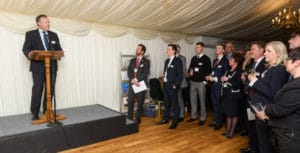
Looking Back at 25: CRY begins a lifetime of raising awareness in Parliament
The annual Parliamentary Reception has become a popular and important feature of CRY’s calendar; a platform where projects have been unveiled, new resources introduced, and campaigns launched – as well as the opportunity for some influential and keynote speeches to be delivered. But where did it all begin? And how did CRY start making an impact

Looking Back at 25: CRY’s first Ambassadors… meet CRY Teddy
Have you ever wondered why a teddy in a t-shirt sometimes pops up on CRY’s posters or turns up at events? Why would one of CRY’s furry friends be pictured on a flyer, helping to promote CRY’s 2020 Heart of London Bridges Walk… and why might we be seeing more of our so-called ‘CRY Teddy’ during
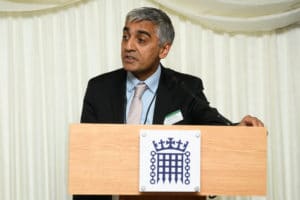
Looking Back at 25: CRY’s shared history with our Consultant Cardiologist, Professor Sanjay Sharma
There won’t be many – if any! – CRY supporters and stakeholders who aren’t already familiar with our Consultant Cardiologist, Professor Sanjay Sharma. Not only has Prof Sharma been an integral part of the fabric of our history for the past 25 years, overseeing (and growing) our pioneering screening programme and supervising and mentoring our Research
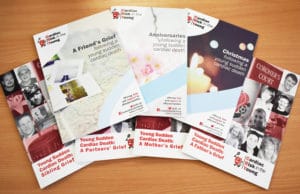
Looking Back at 25: CRY’s bereavement support programme
After founding CRY in 1995, Alison Cox MBE became increasingly aware of the kind of support that was needed for families who had lost someone to young sudden cardiac death. This included both an explanation of the cause of death, the incidence of these tragedies, and bereavement support for those affected. As Alison has explained, it
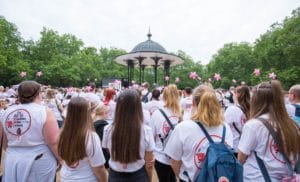
Looking Back at 25: The history of CRY’s Heart of London Bridges Walk
Former international opera star Kathryn Harries first had the idea for a walk in 2006, the year she became a CRY Patron. Then, on 7th July 2007, she completed a 32-mile walk along the Thames path, heading across all of the bridges from Hampton Court to Tower Bridge on her way. A week later on July
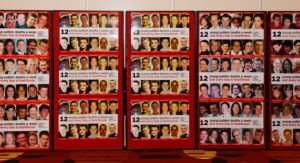
Looking Back at 25: How the pioneering postcard project gave the stamp of approval to CRY’s campaign for change
First launched in 2004 (then revived almost five years later) CRY’s iconic postcard campaign marked a turning point in the evolution of the charity. The initiative helped take CRY from a reactive organisation with raising awareness and specialist bereavement support at its heart, to a lobbying organisation where political impact and meaningful engagement with MPs mattered.

Looking Back at 25: How one of CRY’s youngest supporters helped write a new chapter in our fundraising history
For this article we’re going to look back to 2005, the year of CRY’s 10th anniversary… From day one, Alison Cox and the team at CRY have often been ‘lost for words’ at the amazing lengths CRY supporters would go to in order to raise funds and awareness for the charity. But, in 2005, Alison came
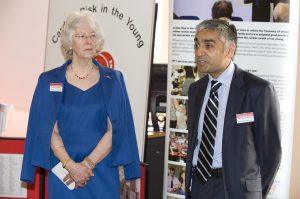
Looking Back at 25: The ICAP Charity Day and launching CRY’s national screening centre
Our last blog post on CRY’s screening programme focused on the early years. We looked back to when our testing was just getting underway and how we developed over the late ‘90s and early 2000s. Now let’s fast forward a few years. In 2009, CRY was chosen as one of the charities to benefit from the
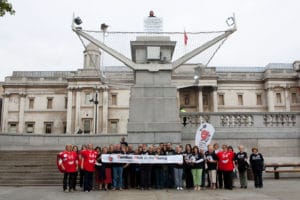
Looking Back at 25: CRY raises awareness at Trafalgar Square’s Fourth Plinth
For around 175 years, the fate of the famous ‘Fourth Plinth’ in London’s Trafalgar Square has been hotly debated with a wide range of innovative installations and contemporary creations taking their place on the vacant podium. Many will remember (although many of CRY’s current supporters and stakeholders may be unaware) that just over a decade ago,
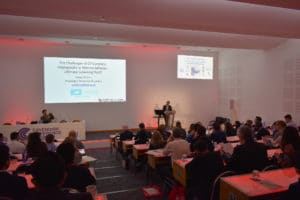
Looking Back at 25: The CRY International Medical Conference
CRY Consultant Cardiologist Professor Sanjay Sharma speaking at the 2018 CRY International Medical Conference. The CRY International Medical Conference is our most important research event every year. It provides an opportunity for leading experts in sports cardiology, inherited cardiac diseases and young sudden cardiac death to share their new research, and discuss the diagnosis and management

Looking Back at 25: The development of the CRY Centre for Cardiac Pathology
Before CRY began in 1995, young sudden cardiac death (YSCD) was never considered to be a significant health issue. It was quite the opposite. The common belief was that there was just one young sudden cardiac death a week. Families were not being given a clear cause of death after losing someone suddenly, coroners didn’t always
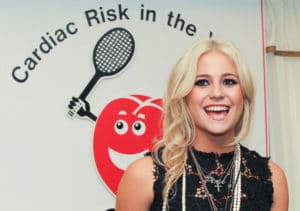
Looking Back at 25: How Pixie Lott became a Patron and helped CRY reach a new generation
CRY has always been fortunate to have had the support of an illustrious list of Patrons – largely from the world of sport, due to CRY’s early associations with tennis and the initial screening of athletes. But, back in 2010, a chance ‘viral video’ made by a group of Surrey schoolchildren saw Pixie Lott – one

Looking Back at 25: The week that shaped the future of CRY screening for years to come
Over the past 25 years, CRY’s history has been defined by a range of ‘turning points’, underpinned by the actions and interventions of individuals and groups (whether families, MPs, doctors or governing bodies from the world of sport). The support, influence and determination of people committed to our cause is what has taken CRY from a
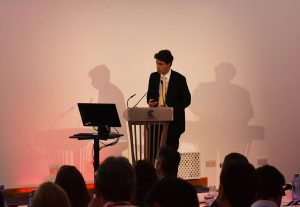
Looking Back at 25: CRY at the annual ESC Congress
This year, like so many other events, conferences and public gatherings, the 2020 European Society of Cardiology (ESC) Congress (29 August – 1 September) was held remotely, for the first time in its 50-year-history. In a statement released during lockdown, organisers explained to delegates; “When one door closes, another opens.’ Due to the current pandemic… ESC

Looking Back at 25: CRY’s history at the London Marathon
CRY’s supporters have taken part in countless different fundraising activities and events since the charity was founded 25 years ago, and one of the key events where our support has continued to grow over the years is the London Marathon. In 1996, just a year after CRY was founded, nine runners took part in the Marathon
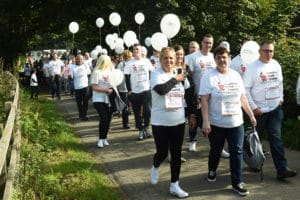
Looking Back at 25: A decade of CRY’s Durham Walk
In the autumn of 2007, The Durham Riverside Walk (as it was originally known) was pioneered by bereaved dad and loyal supporter, Jeff Morland – whose son, Levon, had died from the condition Wolff-Parkinson-White (WPW) in 2002, aged just 22. Jeff was encouraged and assisted by his good friend, Steve Percival, who fast became a key




